It’s been a wait and a half but as of right now, I think it’s safe to speak about AMD’s RDNA4-powered Radeon RX 9070 Series lineup. In this review, I’ll be covering the “flagship” model of the two, the 9070 XT.
To be even more precise, I’m going to be taking a look at the Sapphire Pure model, given that AMD is leaving the cooling solutions for the GPUs to its AIB partners. At a starting price of US$599, is this card the answer to NVIDIA’s mid-range RTX 5070 series? Keep reading to find out.
Specifications
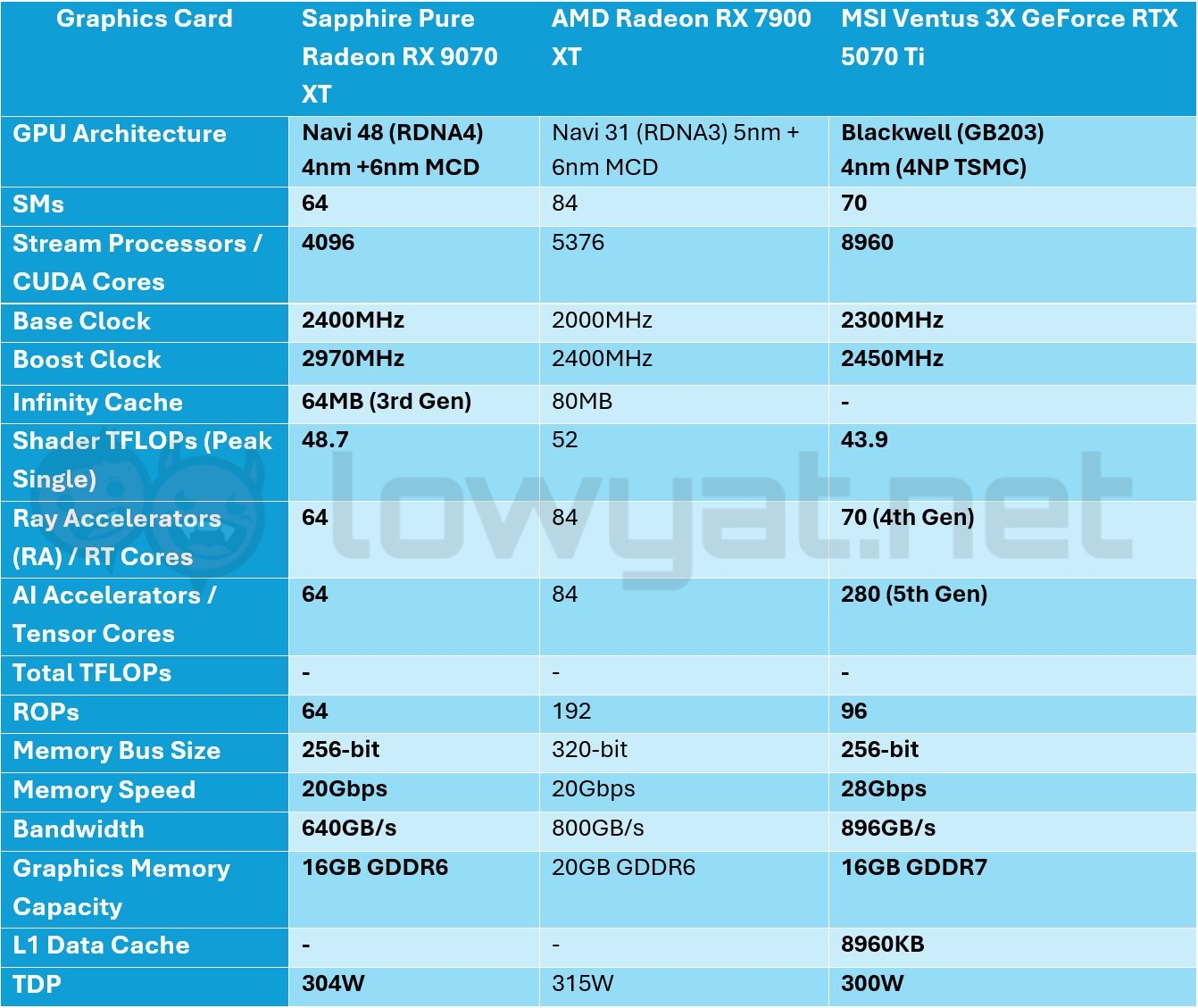
Design


Before I delve into the Sapphire Pure’s aesthetics, let us first speak a little bit about AMD’s new RDNA4 GPU architecture. So, the 9070 XT is built around the Navi 48 that is built on a N4C process from TSMC. As such, the die lithography is measured at 4nm and is the Red chipmaker’s thinnest and most advanced GPU die, to date.
Specs-wise, as you can see in the specifications sheet above, the 9070 XT sports 16GB of graphics memory but is still using the older GDDR6 memory. There’s nothing wrong with that though, as AMD has made some improvements to the memory interface, as well as beefed it up with other features like a new generation of ray tracing cores, FSR4, and PCIe 5.0, among other things.
A card to capture the mainstream market, not the high-end.
Just to ground your expectations and in case you’re not aware, the 9070 XT isn’t an enthusiast or high-end level GPU but is instead, along with the non-XT, a class of GPU designed for the mainstream market. AMD knows full well that, at this stage, it can’t go up against NVIDIA’s own enthusiast-level GPUs.
That out of the way, let’s talk about the Sapphire Pure Radeon RX 9070 XT. In keeping with the trend, the whole cooling solution of the card extends beyond the length of the PCB. The cooler shroud features angular cutouts all around and the brand has opted to go with the triple-fan cooling solution, plus a backplate for rigidity and anti-sagging measures.


Ports-wise, the card gets two DisplayPort 2.1a ports and two HDMI 2.1 ports, while its boost clock has been uplifted to 3010MHz. More importantly, the card still uses the standard dual 8-pin PCIe power ports to run.
Testbench
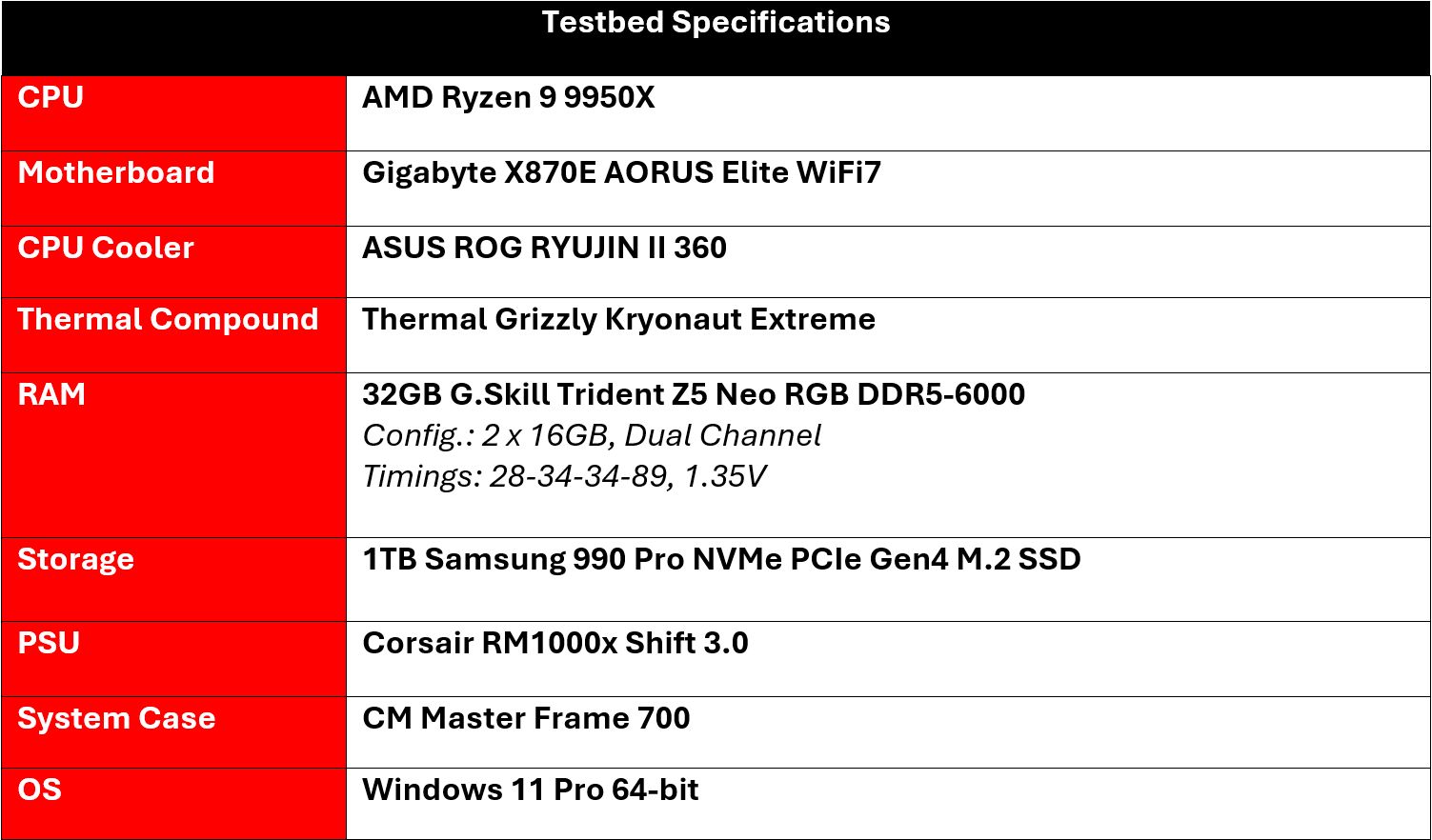

To compare the 9070 XT, I am including the results from three other NVIDIA cards: the RTX 5070 Ti, the RTX 5070, and the RTX 4070 Super. In essence, these are the GPUs that AMD is competing against in the mainstream 4K and 1440p market, so it obviously makes sense to include them.
As to the testing methodology, the results of some titles are obtained purely on rasterisation but some (obvious) titles and their average framerates are obtained through the aid of the inescapable ray tracing and respective upscaling technologies.
Benchmarks, Temperatures, and Power Consumption
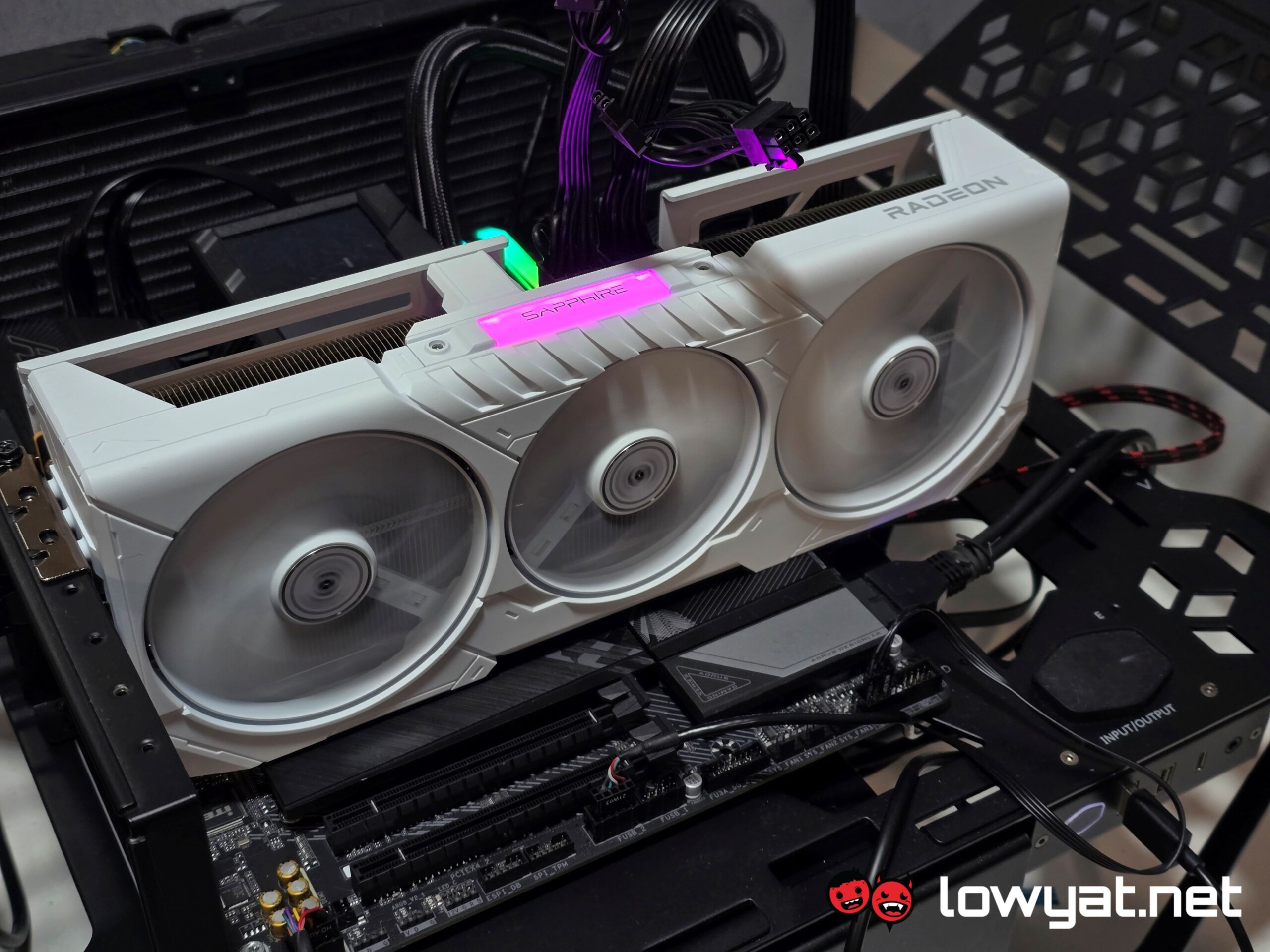

So, on a synthetic level, the 9070 XT is a beast. On paper, it’s basically on par with the RTX 5070 Ti overall and, dare I say it, overpowers the RTX 5070.
In the Unigine Superposition test, the 9070 XT gives a repeat performance too, leaving the RTX 5070 and RTX 4070 Super behind by a proverbial mile. That said, the card does get a little toasty; while HWInfo registers the GPU core’s temperature on load as 56C° at most, it’s actually doing closer to 80°C. The latter makes more sense, given that the card is pulling a little more than 310W of power from the wall.
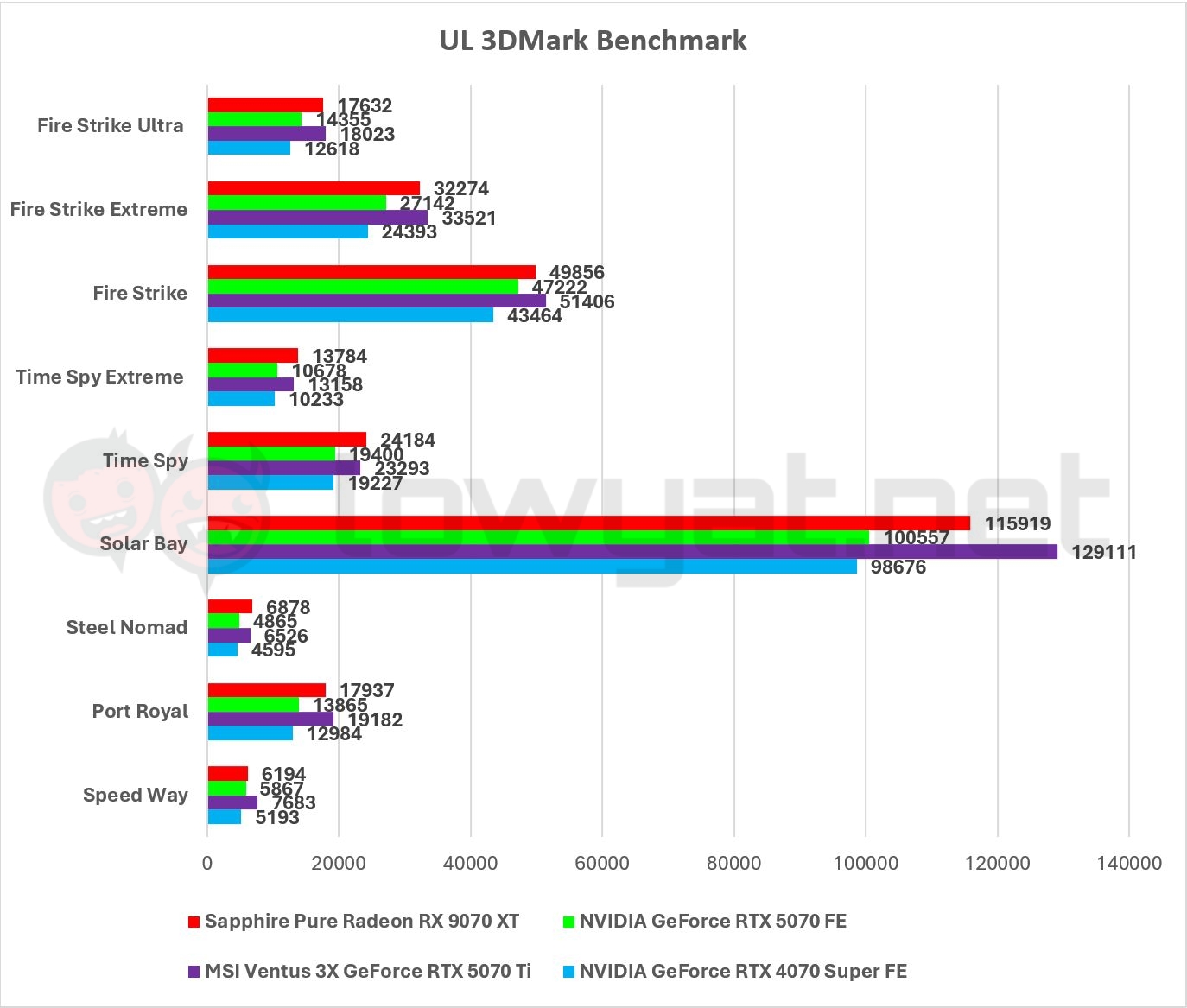

As we enter the gaming portion of the benchmark, it’s easy to see where the 9070 XT wanes, and where it flourishes. In DLSS-heavy titles like Alan Wake 2, the card gets absolutely crushed, and that’s by the sheer lack of AMD’s most current FSR3 or latest FSR4 upscaling technology.
At 4K, the card’s average frames slow down to a snail’s crawl, averaging anything between nine and 20 fps. Those number do pick up when you drop the resolution down to 1440p or FHD but honestly, the visual quality still takes a hit, generating a lot of noise and artifacts.
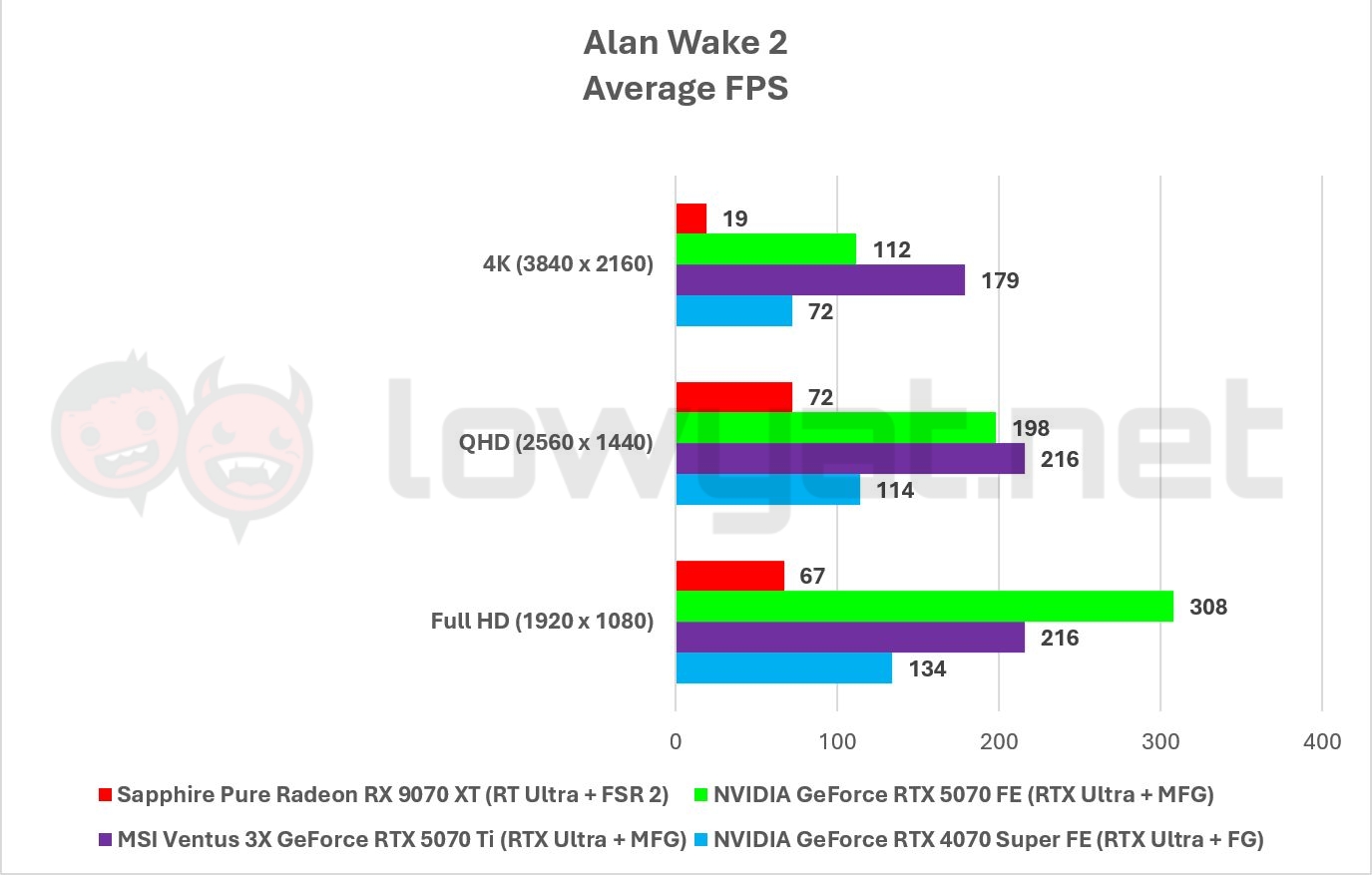

In Cyberpunk 2077, the 9070 XT pulls a respectable 46 fps at 4K with path tracing, and with FSR3 and Frame Gen active. Once again, dropping the resolution to QHD or FHD brings up the frame rates to a more enjoyable 100 fps average but I should point out that with my GPU, I was experiencing some odd frame-pacing issues. Basically, I get this weird lagging effect that makes it appear as though the game was running at 30-ish fps, even if the framerates being registered were certainly higher than that.
As for games without ray tracing turned on such as DOOM Eternal, the 9070 XT easily generated an average of 200 fps without a flinch, while titles that come support AMD’s FSR3 such as Starfield and Ghost of Tsushima were able to churn out well above the 100 fps mark across all three resolutions.
Conclusion


If there’s one thing that can be said about the 9070 XT, it would be that AMD is giving gamers what I would describe as a pleasant surprise. At US$599 (~RM2,653), the red chipmaker is presenting gamers with a moderately aggressive alternative to NVIDIA’s GeForce RTX 5070 Ti.
Yes, an argument can be made there’s not a whole lot of games that support FSR4 at the moment but to be fair about this: the same can be said about NVIDIA and DLSS4 implementation. But again, from a standpoint of gaming on pure rasterisation, there’s fault to be found with the 9070 XT. For that matter, the card and the lineup as whole brings with it something that this industry has been lacking for a very long while: competition.
Photography by John Law
Follow us on Instagram, Facebook, Twitter or Telegram for more updates and breaking news.


